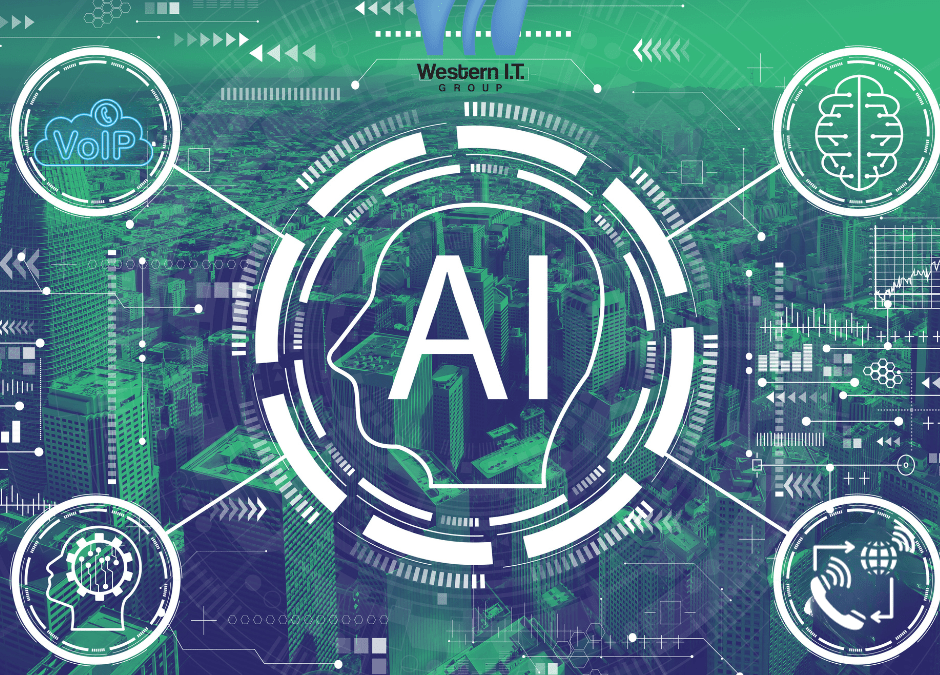Generative AI has the potential to dramatically reshape how companies manage their VoIP communications. A more intelligent chatbot could do a lot of wonders.
By: Venus KohliPublished: 12 Sep 2023 on: www.techtarget.com
” AI in VoIP ” Generative AI is gaining traction, and one of its most intriguing applications is its integration with voice services, such as voice over IP. AI-based VoIP is not a new technology as it has been used for years to power bots in business phones and call centers.

But with generative AI boasting the ability to intelligently respond to user requests, VoIP AI has the potential to let enterprises slash their internal communications expenses by letting AI handle tasks formerly handled by humans.
Let’s examine some key capabilities and business benefits of adding generative AI to VoIP services.
VoIP AI capabilities
Conference capabilities
Communication gaps between employees can be addressed through AI capabilities that perform administrative tasks.
VoIP AI can be programmed to act as a virtual assistant and repeatedly perform intelligent high-priority tasks:
- Scheduling conferences.
- Setting meeting reminders.
- Welcoming guests.
- Operating live video conferences.
- Marking attendance.
- Managing call duration.
- Displaying information.
- Translating in real-time.
- Displaying live subtitles.
- Noting down important points.
- Providing voice-to-text and text-to-voice services.
Advanced analytics
Enterprise client communication processes encompass many steps: managing call routing data, storing messages, recording demographics and gathering other information to train staff. AI can perform data analysis to formulate predictive analytics to efficiently categorize customer behaviour, engagement, requirements and patterns. During customer calls, chatbots quickly retrieve the analyzed data for better assistance.
In addition, VoIP AI for internal communications can provide an overview of employee behaviour and engagement to identify performance metrics. Enterprises can tap into that data to improve their policies, work ethics, and marketing strategies and even make changes to their main products and services.
Pattern recognition
This is a key benefit of generative AI as pattern recognition identifies repeated behaviors and requirements. AI technology can collect and store customer data in various forms of interaction, including text, voice and video calls. The data is then converted from voice-to-text or video-to-text for analysis. When a customer calls, the AI will retrieve the caller’s data to identify patterns and predict reasons for the call.
Pattern recognition drives more effective internal communication and customer call routing, especially for marketing and sales. This process can also be used to identify and block fraudulent or spam callers.
Customer chatbots
Enterprises with interactive voice response (IVR) systems can use VoIP AI to offer more tailored experiences for customers, which can reduce average wait times and create faster ticket resolution. Using large sets of existing data, an AI-driven chatbot can process more complex customer inquiries, troubleshoot issues and offer self-service.
AI chatbots can also address different communication channels and formats, including text, audio and video.
Natural language processing
Companies can boost customer engagement by incorporating NLP for automatic speech recognition, translation and transcription to generate smart responses in live conferencing. Unstructured caller data is used to train the AI model for hyper-customized interactions, enabling chatbots, for example, to assist global customers in their preferred languages.
Automatic call routing
Using AI to determine how calls are routed helps companies beef up their customer service. Not only does the technology use machine learning for predictive analytics and skill-based classification for call routing, but it also identifies customers by their voice or behavioural patterns and transfers calls more efficiently. In case of errors, VoIP AI automatically reroutes calls to the relevant department.
Business benefits of AI in VoIP
Troubleshooting and security
VoIP AI troubleshoots predicted technical issues, such as low bandwidth, high latency and improper network configurations. The technology also combats cyber-attacks by detecting possible threats and flagging any deviations from normal operations.
Reducing workloads and costs
Using VoIP AI to automate low-level business processes such as scheduling, attendance and authorization enables companies to focus on more complex, high-priority tasks. It can take input service requests, or prompts, in text, image, voice or video. It also supports voice searches, voice commands and corresponding voice results. VoIP AI interprets the language and provides relevant results. This can translate to cost savings and reduced Opex for organizations.
Personalized communications
The ability of AI to collect data and create meaningful information from a call helps enterprises offer a customized and personal experience to a large set of users. For example, more customized experiences with IVR systems can boost customer satisfaction. Internal employee communication can benefit from personalization to support collaboration.


